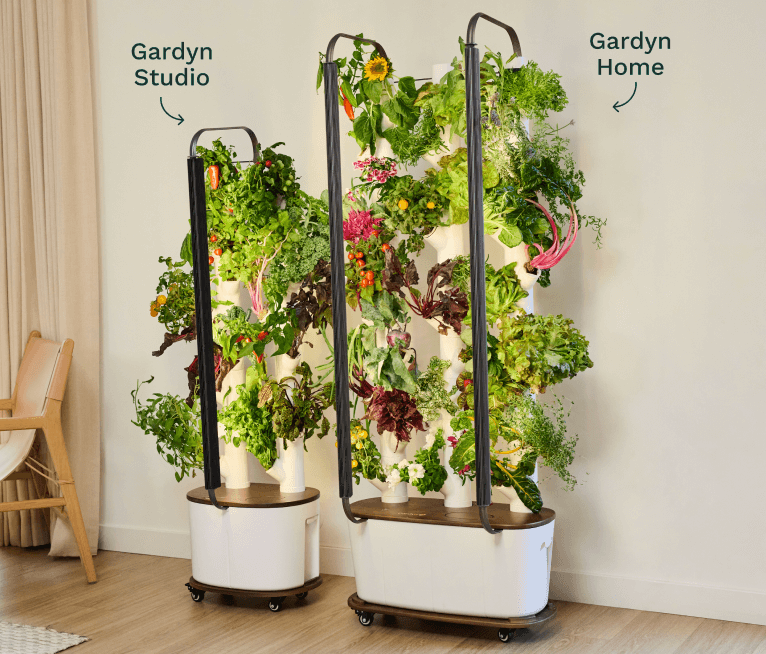Best Handheld Anemometer for Accurate Wind Readings
Did you know wind speeds can change a lot in just a few feet at ground level? It’s important for outdoor fans, researchers, and professionals to know this. That’s why a handheld anemometer is key. It’s a small tool that helps you get accurate wind readings.
Whether you’re watching the weather, planning a sail, or doing environmental studies, it’s vital. This guide will show you the best handheld anemometer choices. We’ll look at their features, benefits, and what users say. You’ll learn how to pick the perfect portable wind speed meter for you.
Understanding Handheld Anemometers
Handheld anemometers are small, light devices that measure wind speed and direction. They are easy to carry, making them great for outdoor activities, research, or construction sites. These devices show wind data in real-time, which is very useful.
There are different types of anemometers, like cup and vane models. Cup anemometers spin with the wind, while vane models turn with the wind direction. The Digital Anemometer is known for its accuracy and easy-to-read digital display. It’s a favorite among meteorologists, scientists, and hobbyists.
A Portable Wind Speed Meter is handy for many things, like checking the weather or ensuring safety in sports. These tools can show wind speed in different units, making them flexible for users.
| Type | Functionality | Use Cases |
|---|---|---|
| Cup Anemometer | Measures wind speed through rotating cups | Meteorology, wind farm assessments |
| Vane Anemometer | Pivots to determine wind direction | Weather monitoring, HVAC applications |
| Digital Anemometer | Displays readings digitally with additional features | Outdoor sports, research, residential use |
Knowing how these tools work helps us make more accurate measurements. This leads to better decisions in many fields.
Benefits of Using a Portable Wind Speed Meter
A Portable Wind Speed Meter is great for those who need to measure wind on the move. They are light and small, making them easy to carry. This makes them perfect for many activities and places. Knowing these benefits shows why getting one is a good idea.
Enhanced Portability
Handheld wind gauges are designed to be carried anywhere. They are very light, fitting in pockets or bags. This makes them useful for outdoor lovers, workers, and scientists to check wind speed quickly. They are handy for hiking or sailing, among other activities.
Versatile Measurements for Different Applications
A compact anemometer is useful for more than just weather studies. It has many uses in different fields. Here are a few examples:
- Sailing and boating, where wind speed affects safety and the best route.
- Photography, helping to avoid blur from wind gusts.
- Construction and outdoor jobs, for safety and efficiency.
- Sports like paragliding and surfing, improving performance.
These uses show how useful a handheld wind gauge is. It proves its value in many situations.
Key Features to Look for in a Digital Anemometer
Choosing the right handheld wind speed tester is key for accurate wind readings. A digital anemometer needs certain features for top performance and reliability. Let’s look at what to consider when picking the right model for you.
Measurement Range
The measurement range of a digital anemometer is crucial. It shows how well the device can measure wind speeds in different places. Whether you’re tracking high winds for science or light breezes for fun, make sure your device can handle it.
Display Clarity and Ease of Use
A clear display is vital for quick readings, especially outdoors where light changes. Choose a small wind meter with a clear screen and simple controls. This makes it easy to use, even in tough conditions.
Battery Life and Durability
For outdoor use, a digital anemometer with long battery life is essential. It also needs to be durable to withstand the outdoors. Pick a handheld wind speed tester that’s built to last and can handle the elements.
| Feature | Importance | Recommended Specifications |
|---|---|---|
| Measurement Range | Captures various wind speeds | 0.3 to 67 m/s |
| Display Clarity | Ease of reading in sunlight | Backlit LCD |
| Battery Life | Ensures long-term use without frequent changes | 200+ hours |
| Durability | Survives harsh weather conditions | IP65 water resistance |
Top Handheld Anemometer Models on the Market
Choosing the right handheld anemometer means knowing what features and prices are out there. There are many models for different needs, from professional tools to fun gadgets for hobbyists. Here, you’ll get key tips to find the Best Handheld Anemometer for you.
Comparing Features and Prices
When picking a handheld anemometer, think about what you need and how much you want to spend. Below, we’ve listed some popular models. We’ve highlighted their features and prices to help you decide.
| Model | Features | Price Range |
|---|---|---|
| AcuRite 02032 | Measures wind speed, direction, and temperature | $30 – $40 |
| Extech 45158 | Thermal anemometer with backlit display | $70 – $90 |
| Kestrel 1000 | Compact design, waterproof, durable | $120 – $150 |
| Ambient Weather WS-5000 | Comprehensive weather monitoring, Bluetooth compatibility | $220 – $250 |
Best Options for Budget-Friendly Choices
If you’re looking for an Affordable Wind Gauge, there are great options. Here are some picks:
- AcuRite 02032 – A great starting point with basic features at a low cost.
- Extech 45158 – Provides more features at a good price, perfect for hobbyists.
- Kestrel 2000 – A bit pricier but known for its reliability and portability, great for outdoor fans.
By comparing features, you can find a handheld anemometer that fits your needs and budget. Whether for personal use or specific projects, there’s a great tool for every budget.
How to Choose the Best Handheld Wind Gauge
Choosing the right handheld wind gauge can really improve your outdoor activities. It’s important whether you use it for work or fun. By knowing what you need and reading user reviews, you can find the perfect one for you.
Determining Your Specific Needs
First, think about how you’ll use the handheld wind gauge. Knowing what you need helps you choose better. Here are some things to consider:
- Intended Use: Will you use it for sports, sailing, or tracking the weather?
- Frequency of Use: Do you plan to use it a lot or just sometimes?
- Measurement Requirements: Do you need to measure temperature or average wind speed?
Assessing User Reviews and Recommendations
User reviews are super helpful. They tell you how well different models work. Look for comments on:
- Accuracy: Do users like the accuracy of the readings?
- Durability: How does the gauge hold up in different weather?
- Ease of Use: Is it easy to use?
Also, check out expert reviews for a detailed look at the models. Reading many user reviews helps you pick the right anemometer for your needs and budget.
What Makes a Compact Anemometer Effective?
A Compact Anemometer is key for measuring wind speed without taking up much space. It’s small but still gives accurate readings. This makes it perfect for outdoor fun like sailing or hiking, where you need something you can carry easily.
Advanced tech makes a Small Wind Meter stand out. Many use ultrasonic sensors for precise measurements. These sensors work with sound waves, giving fast and reliable results.
These devices also have features like easy-to-grip handles and data logging. This makes tracking your measurements simple. It’s great for both fun activities and serious weather studies.
| Feature | Compact Anemometer | Traditional Anemometer |
|---|---|---|
| Size | Small and portable | Bulkier and heavier |
| Measurement Technology | Ultrasonic sensors | Mechanical cups/blades |
| Accuracy | High accuracy in various conditions | May require calibration |
| Ease of Use | User-friendly design | Can be complex to operate |
In short, the Compact Anemometer is a must-have for both fun and work. It’s packed with tech, is easy to carry, and simple to use. It’s a top choice for anyone who needs to measure wind, whether for fun or serious studies.
Portable Wind Speed Meter vs. Other Anemometers
A Portable Wind Speed Meter is unique compared to other anemometers like stationary or cup-style models. Knowing the differences in precision and use helps users pick the best device for their needs.
Accuracy Comparison
The accuracy of anemometers depends on their design and purpose. Portable Wind Speed Meters are good enough for personal, fun, and non-industry uses. But, professional models like cup anemometers are better for precise studies, especially in weather research.
Here’s a comparison of accuracy:
| Type of Anemometer | Typical Accuracy | Ideal Usage |
|---|---|---|
| Portable Wind Speed Meter | ±0.5 m/s | Recreational, DIY projects |
| Cup Anemometer | ±0.1 m/s | Meteorological research, wind farms |
| Vane Anemometer | ±0.2 m/s | HVAC applications, laboratory use |
Use Cases and Limitations
Portable Wind Speed Meters are great for many uses like sports, environmental checks, and DIY projects. They are easy to use and let users get wind data quickly.
But, these handheld devices have some downsides. They might not last as long as needed for industrial monitoring. Also, weather can affect their readings, especially in bad weather.
Knowing what a Portable Wind Speed Meter and other anemometers can do helps users make the right choice for their needs.
Understanding Wind Speed Measurement Units
Using a handheld anemometer means knowing about wind speed units. The main units are miles per hour (mph), kilometers per hour (km/h), and knots. Each unit has its own use, which is key for accurate readings.
In the U.S., mph is the go-to for daily use. In many countries, km/h is the standard, especially where the metric system is used. Knots are mainly for aviation and sea travel. Knowing these units helps you understand your anemometer’s readings better.
Handheld anemometers let you switch between these units easily. This makes it simple to change and show measurements as needed. Understanding how anemometers work is crucial for making good decisions in sports, research, or environmental monitoring.
| Measurement Unit | Abbreviation | Usage Context |
|---|---|---|
| Miles per Hour | mph | Commonly used in the United States for general purposes |
| Kilometers per Hour | km/h | Commonly used internationally, especially in metric countries |
| Knots | kn | Frequently used in aviation and maritime conditions |
Using a Pocket Anemometer for Various Activities
A pocket anemometer is very useful in many situations. It helps people check wind conditions, making outdoor activities safer and more fun. It’s great for athletes and researchers, showing its value in many tasks.
Outdoor Sports and Activities
For sports like sailing, paragliding, and skiing, a pocket anemometer is key. It lets athletes track wind speed and direction. This info is crucial for better performance and safety, especially in changing weather.
Knowing the wind helps decide the best time to start an activity. The benefits are:
- Real-time data: Athletes get instant wind speed info for better decisions.
- Compact design: It’s small and easy to carry, perfect for quick checks.
- Durability: It can handle different weather conditions, making it reliable.
Environmental Awareness and Research
In environmental studies, pocket anemometers are crucial for wind data. They help researchers understand local weather. This is useful for many reasons.
- Data collection: They help gather wind speed data for environmental studies.
- Educational use: Great for teaching about meteorology in classrooms and field trips.
- Environmental impact studies: They’re key for studying how wind affects ecosystems and biodiversity.
| Application | Benefit of Pocket Anemometer |
|---|---|
| Outdoor Sports | Real-time wind speed data for enhanced safety and performance. |
| Environmental Research | Accurate data collection for studying weather patterns. |
| Education | Hands-on learning tool for understanding wind and weather phenomena. |
Best Practices for Measuring Wind Speed Accurately
To get precise wind speed readings, you need to pay close attention and know about the environment. Using the best methods can make your wind measurements more accurate. This part talks about how to position yourself and when to measure for better results.
Proper Positioning and Time of Measurement
To get accurate wind speed with your handheld wind gauge, follow these tips:
- Select an open area: Stay away from buildings, trees, or other things that block the wind. Open areas give more reliable and steady readings.
- Time your measurements: Wind can change during the day, so pick the best times to measure. Early mornings or late afternoons are usually steadier.
- Height matters: Hold the handheld wind gauge at a height that shows the average wind for your needs. This is usually 5 to 10 feet off the ground.
- Minimize movement: Stand still while measuring to avoid changing the wind speed readings.
By following these best practices, you can measure wind speed accurately. This helps in making better decisions for outdoor sports, construction, or environmental monitoring.
Where to Find the Best Handheld Wind Speed Tester
Finding the right handheld wind speed tester is easier when you know where to look. The market has many options, so you can find one that fits your needs.
Top Online Retailers
Popular online stores make it easy to buy the Best Handheld Wind Speed Tester. Here are some top places:
- Amazon: It has a wide selection and customer reviews, making it a great starting point.
- Home Depot: They offer a variety of handheld anemometers, perfect for outdoor lovers.
- Specialized Weather Equipment Sites: Sites like WeatherStationPro focus on weather gear, offering great options for serious users.
Comparison of Prices and Shipping Options
When you’re ready to buy, comparing prices is key. Here are some tips:
- Look at different sources to find the best deals on handheld wind speed testers.
- Check shipping options. Some stores offer free shipping or discounts that can save you money.
- Make sure to check return policies. This way, you can easily exchange or return if needed.
By exploring these online stores and using price comparison tools, you can get a great deal. You’ll also make sure you choose the right device for your needs.
Customer Reviews: What Users Say About Their Handheld Anemometer
Customer feedback is key to understanding handheld anemometers. Many users have shared their experiences. This helps others make better choices. By looking at Handheld Anemometer Feedback, you can see which models are popular.
Highlighting Common Praises and Complaints
Many User Experiences show common themes. Users often praise the devices’ ease of use and accuracy. They say even beginners find them easy to use, thanks to clear displays and simple controls.
- Praises:
- Accuracy in wind speed measurements
- Portability and lightweight design
- Quick response time for readings
- Durable construction for outdoor conditions
- Complaints:
- Limited battery life leading to inconvenient usage
- Some models reported to be less durable than expected
- Minor calibration issues affecting readings
By looking at common praises and complaints in Customer Reviews, buyers can choose the right handheld anemometer. This helps meet their specific needs and preferences.
Maintaining and Calibrating Your Small Wind Meter
Keeping your handheld anemometer in good shape is important. Regular checks for wear and tear are essential. Look for debris in the sensor openings and make sure the display is clear.
Cleaning your device with a soft cloth and mild soap is a good idea. This helps prevent any buildup that could mess up your measurements.
Calibrating your anemometer is also crucial for accurate readings. Check the manufacturer’s guidelines for specific steps. Calibrate it at least once a year or after any damage or harsh weather.
This process usually involves comparing your readings to a known standard. You might need to make adjustments. Following these steps carefully is key.
How well you take care of your small wind meter affects its performance. Spending time on maintenance and calibration can improve your wind measurements. Don’t skip these steps, as they’re vital for your anemometer’s functionality.
FAQ
What is a handheld anemometer used for?
How accurate is a portable wind speed meter?
Can I use a small wind meter for professional purposes?
What features should I look for in a digital anemometer?
How do I calibrate my handheld wind gauge?
Are there any specific care tips for my compact anemometer?
What is the difference between a pocket anemometer and other models?
Where can I purchase the best handheld wind speed tester?
How often should I check the battery life of my small wind meter?
Can I use my handheld anemometer in harsh weather conditions?

Suyash Dhoot, editor at SouthElMonteHydroponics.com, is a pioneering force in hydroponics. His expertise spans nutrient solutions and cutting-edge technology. Through meticulous editing, he elevates the site to a beacon of knowledge, offering invaluable insights. Dhoot’s dedication shapes a greener, more efficient future for agriculture.




